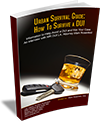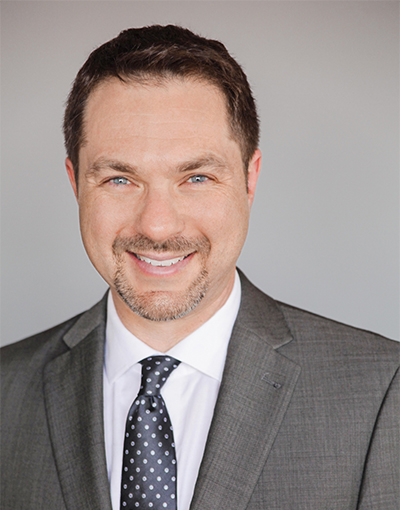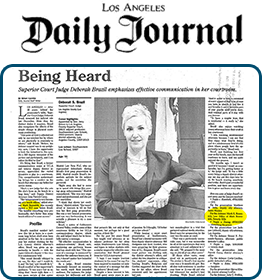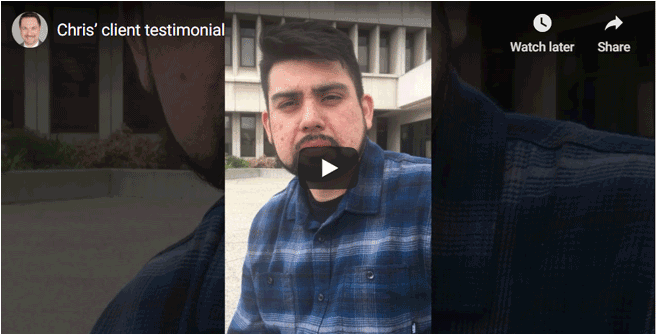California is an unusual state, because it has a lot of different jurisdictions that all get to choose what instruments for breath tests or blood testing machines they want to use. We have just about every manufacturer and every machine used throughout the state of California, and various agencies use different evidentiary tests within just the county of Los Angeles.
Someone who was in the city of Los Angeles would be taken to the Los Angeles Police Department and given a breath test on the ECIR-II breath testing machine. Somebody who was in the county of Los Angeles, would be taken to a sheriff’s station or maybe a CHP station and/or one of the local police stations like the Beverly Hills Police Department, and they would be given a breath test on a Data Master DMT machine which would be maintained by the sheriff’s department.
Other cities, such as the Long Beach Police Department, have their own crime lab and their own breath testing machines, the Intoxilyzer 5000 machines. Just in LA County alone, various stations would be using various machines from various manufacturers, and different police departments would also use different breath testing instruments out in the field.
There is a lot of variability, and it would be important to know what machines were being used so the attorney would know what analysis was being done. The attorney would know what questions to ask and what evidence to get to properly interpret what was going on in a particular person’s case.
Who Can Legally Administer a Breathalyzer Test? Do They Need Special Training?
In order for a breath test to be reliable, it would need to be administered by somebody who had received training on that particular instrument. There are different training protocols for different agencies and different manufacturers, and most of the time the police officers would be trained on the instruments they were using. The training can become a lot less formal, especially when it comes to the portable handheld devices. Many police officers are given handheld breath testing instruments and are not really formally trained on what they are.
A typical training may consist of an 8-hour day culminating in a written examination, and if an officer received a full day of training and took a written test and a practical test on how to use an instrument, the officer would be competent enough to use that machine and administer the tests.
Typically the person would need at least 8 hours of training on a breath test machine before they were able to use it properly. (This does not mean they would always follow the right procedures.) Sometimes the officer would not have been trained on it for that period of time, or they would have been trained on an earlier machine but were not re-trained on the new machine even though they would continue to give tests. Most officers would be trained on a breath testing instrument when they either started at the academy or when they first got assigned to a location.
How and Where Is the Breathalyzer Test Typically Administered?
The breathalyzer test would be administered depending on where the person was stopped and arrested.
Somebody who was stopped in the city of Beverly Hills would be transported to the Beverly Hills Police Department. They would be taken down into the parking lot when they first got there and would then be transported by elevator up to the second floor where the breath testing room is located. This room records continuous video when people are in the room, and the person would be seated next to the instrument and observed for a minimum of 15 minutes before being asked to give a breath test on the Data Master machine.
Someone who was stopped by a Los Angeles county sheriff might be taken to the local sheriff’s station. The instrument may be in an individual room by itself or in a storage room with other chemicals, cleaning solutions, and fingerprinting inks. It may be in a hallway or on the sergeant’s desk. There is generally a lot of variation depending on which agency the person went to. The same machine may be in a very different spot and subject to contamination or radiofrequency interference depending on where it was.
The sheriff would use the “The Data Master” which is the same machine as the one used in Beverly Hills. They would have to do a minimum of a continuous 15-minute observation period before they had the person blow. Several samples of breath are needed in order to get the valid result. Two samples with certain minimum requirements for the amount of air that goes through the machine and the time the air goes through the machine are needed in order to get a valid sample.
Somebody who was arrested in the city of Los Angeles might be taken to the local LAPD station, maybe the 77th Street station. They would be taken in through the custody intake and transported to a little cubby in a hallway where the machine was located. The officers would read some instructions and there might be a chair for someone to sit in. It would be somewhere in the middle of the busy hallway amongst a lot of other papers, notebooks and other things. The location of the machine would depend on the agency. What also varies is how long it took the person to get to it and what happened once they started to use it.
How Accurate Are Breathalyzer Tests, and How Do They Measure Breath Alcohol Content?
Breathalyzer tests can be relatively accurate if they are used in the appropriate way on the appropriate subject. Testing has been done over the last 30 to 40 years where they have compared breath test results and blood test results. They can often get very close results if somebody was in the right phase of alcohol absorption, if the instrument was used correctly and if the officer had administered the test correctly. A very accurate number might be registered if everything was done correctly, but that would be for an average person blowing through the machine during the post-absorptive phase.
For more information on Breath Test Machines in California, a free initial consultation is your next best step. Get the information and legal answers you’re seeking by calling (310) 424-3145 today.






 Personal Attention
Personal Attention Every criminal case is unique and no attorney can guarantee the outcome of a case. The information on this site is legal advertising and for general information only. Using this site, requesting books, information, consultations or communicating with Attorney Rosenfeld through its site does not form an attorney/client relationship.
Every criminal case is unique and no attorney can guarantee the outcome of a case. The information on this site is legal advertising and for general information only. Using this site, requesting books, information, consultations or communicating with Attorney Rosenfeld through its site does not form an attorney/client relationship.








